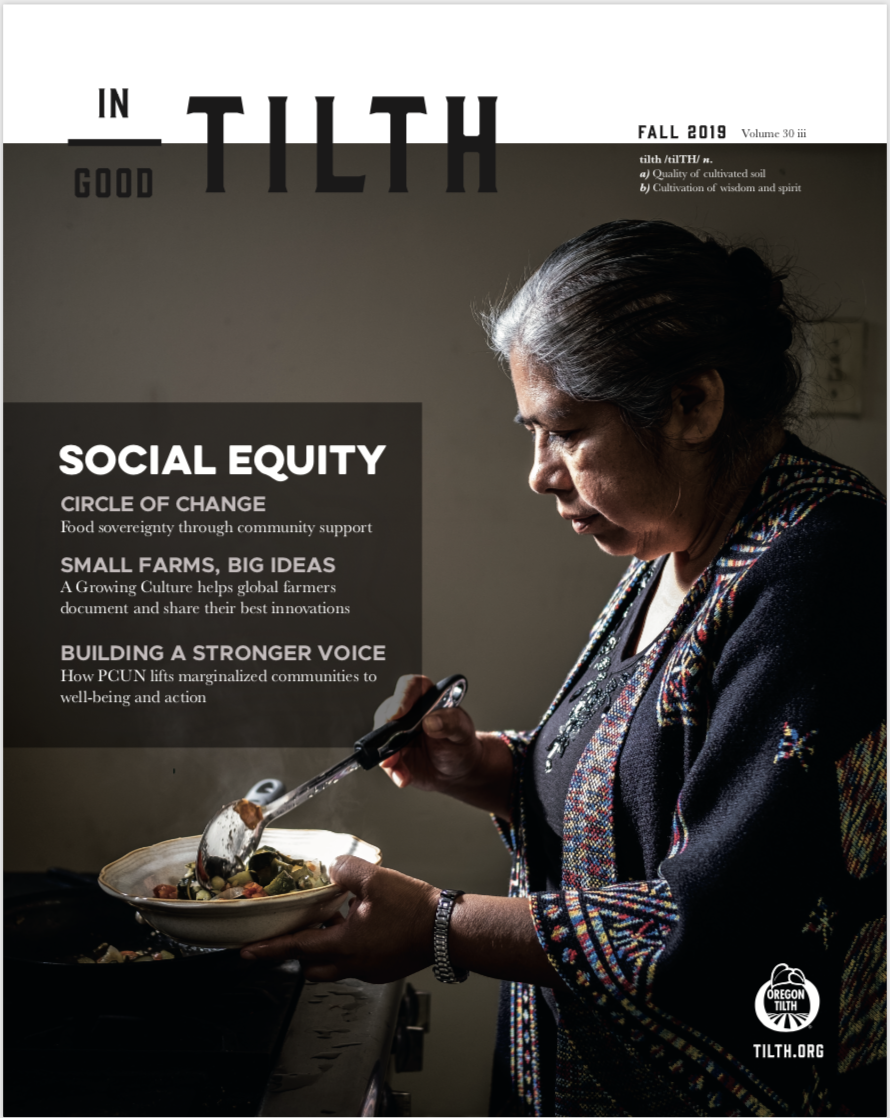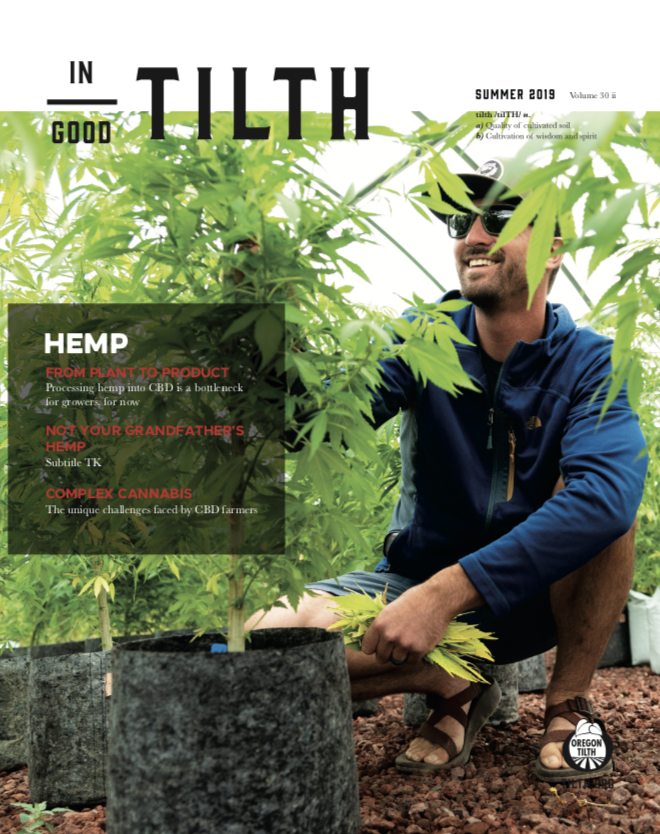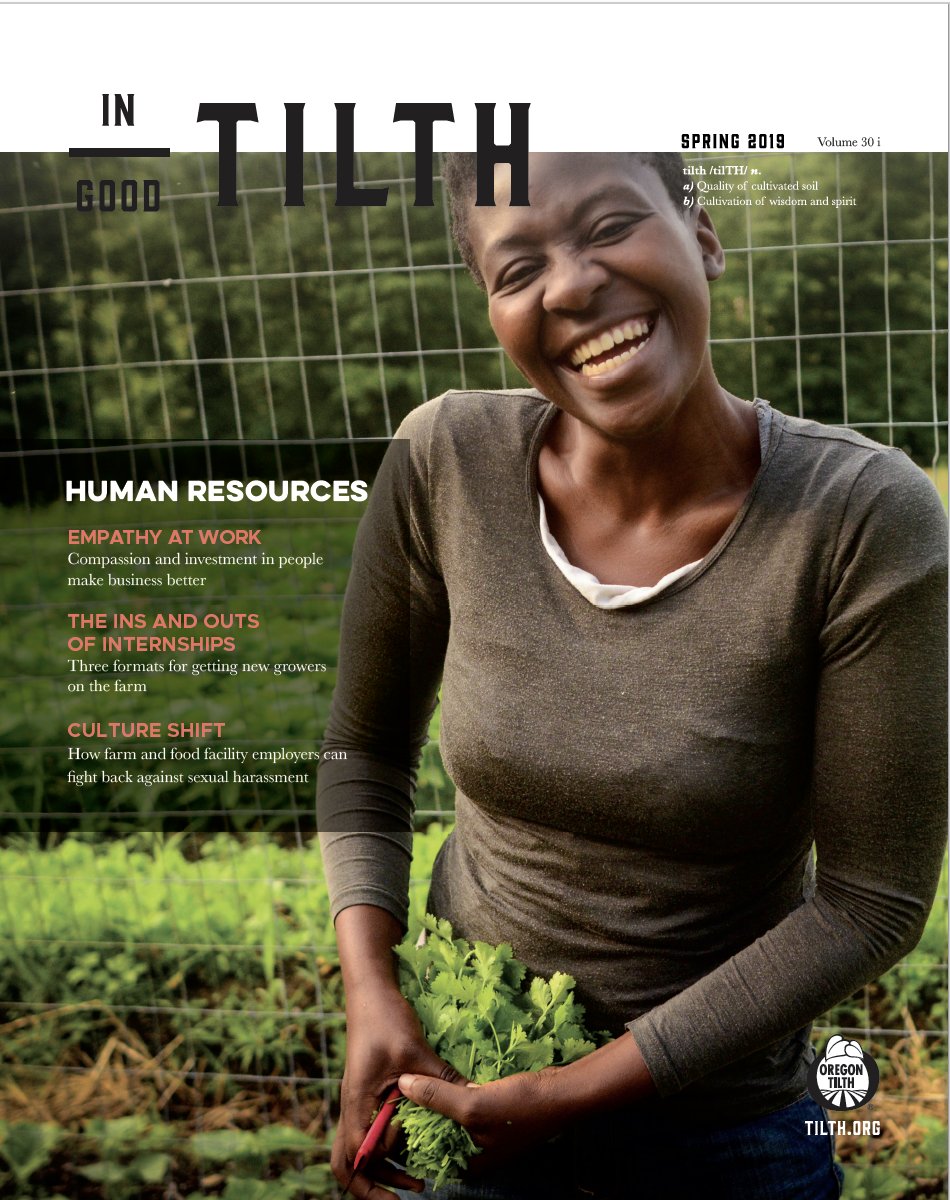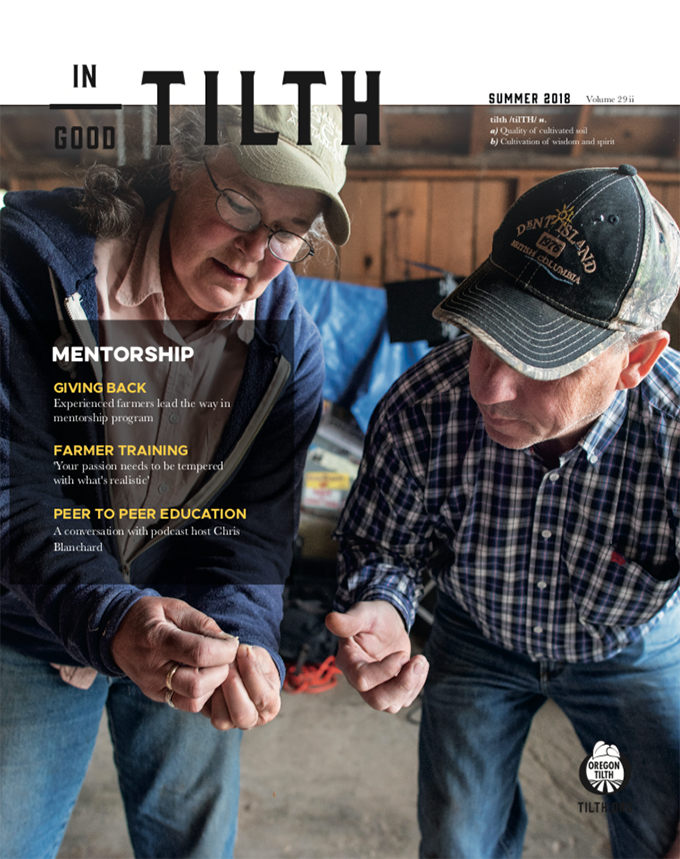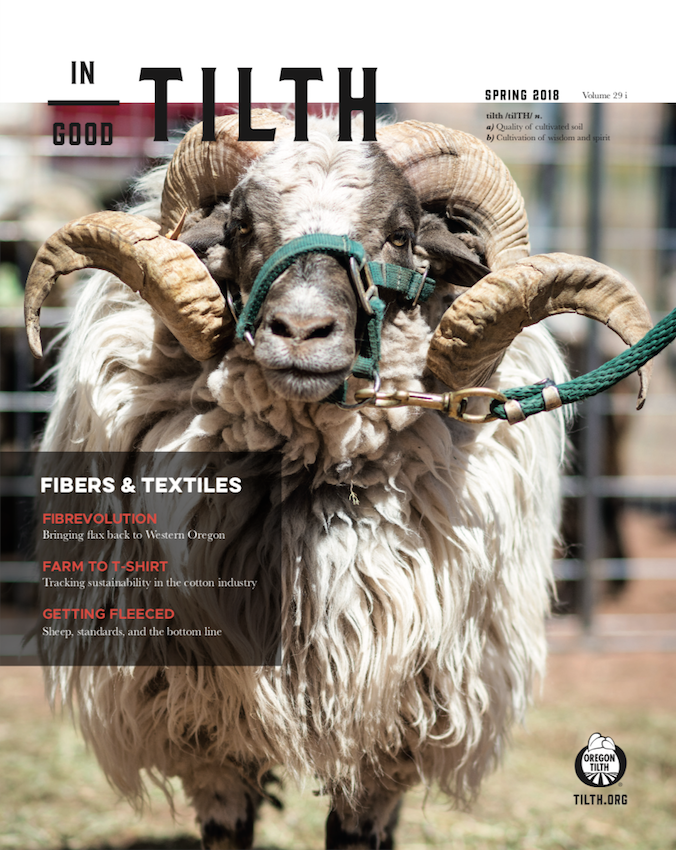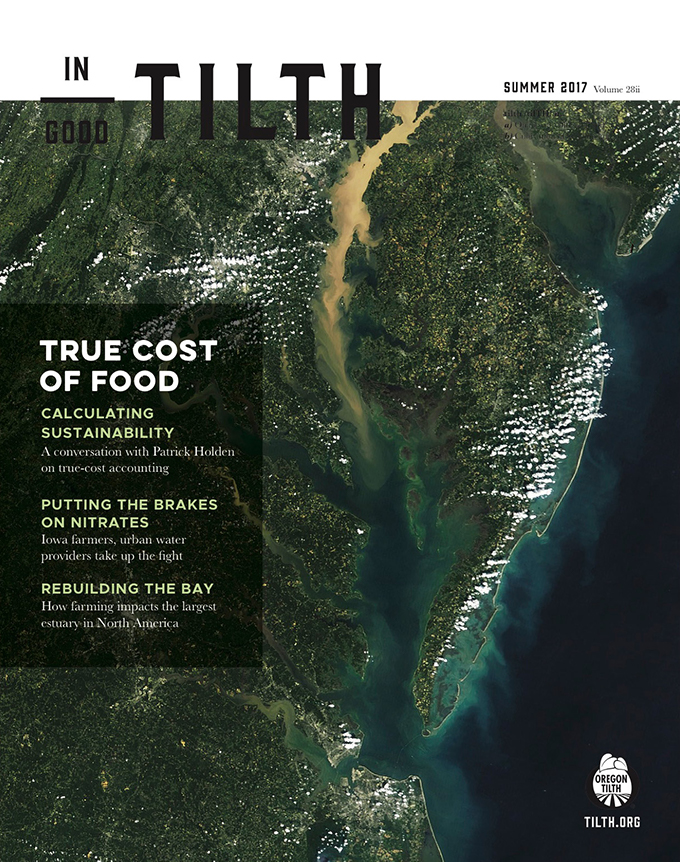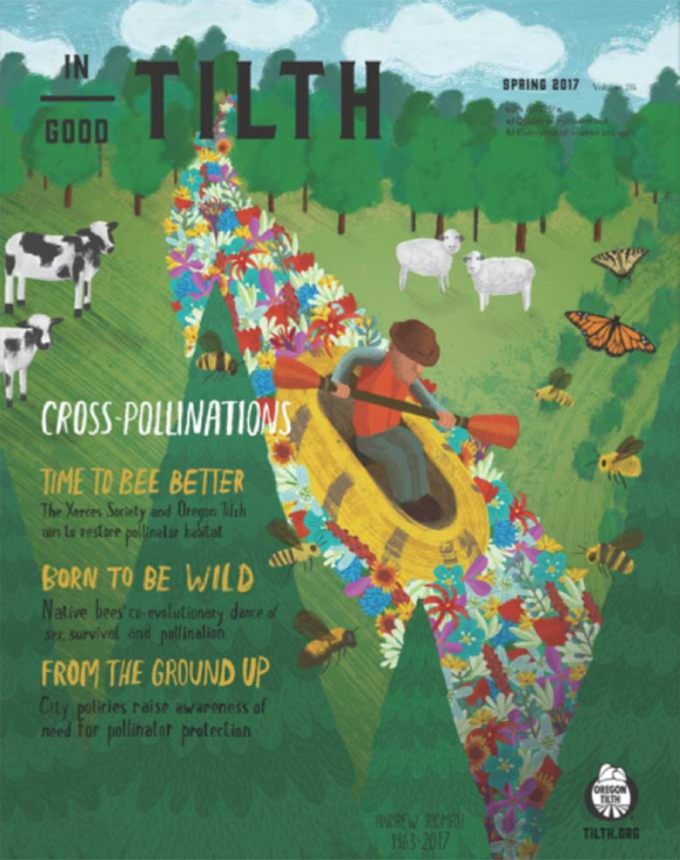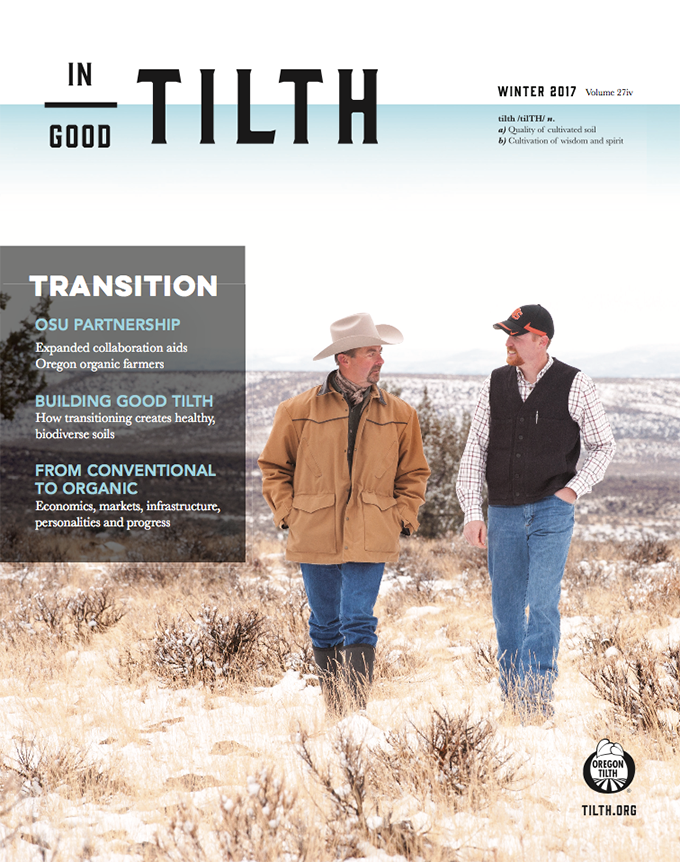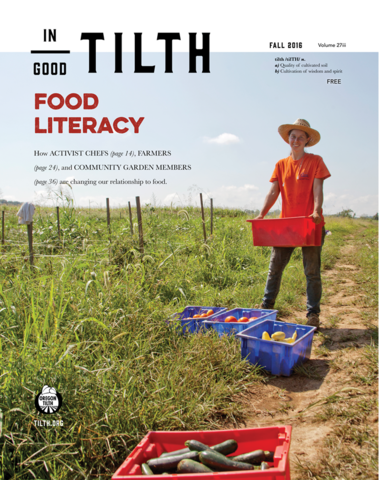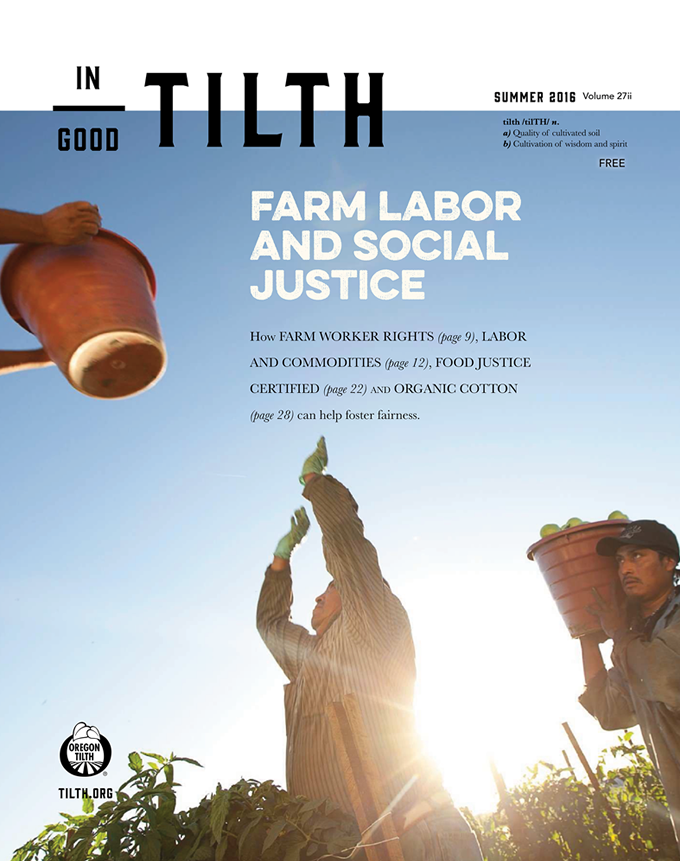A hundred years ago, we would have been up to our hips in water here,” said Tom Frantzen as we walked across one of his pastures. The farm, which includes arable land, beef cattle and hogs, has been certified organic since 2001. When settlers, like Frantzen’s great-grandfather, came to Iowa in the 1850s, much of the land was “wet prairie.” Farming remained difficult until about 1915, when farmers started to install tiles for subsoil drainage, laying the foundation for Iowa’s ascent to its current position as one of the top agricultural states in the U.S. Suddenly, almost anything could be grown in the rich, dark soil.
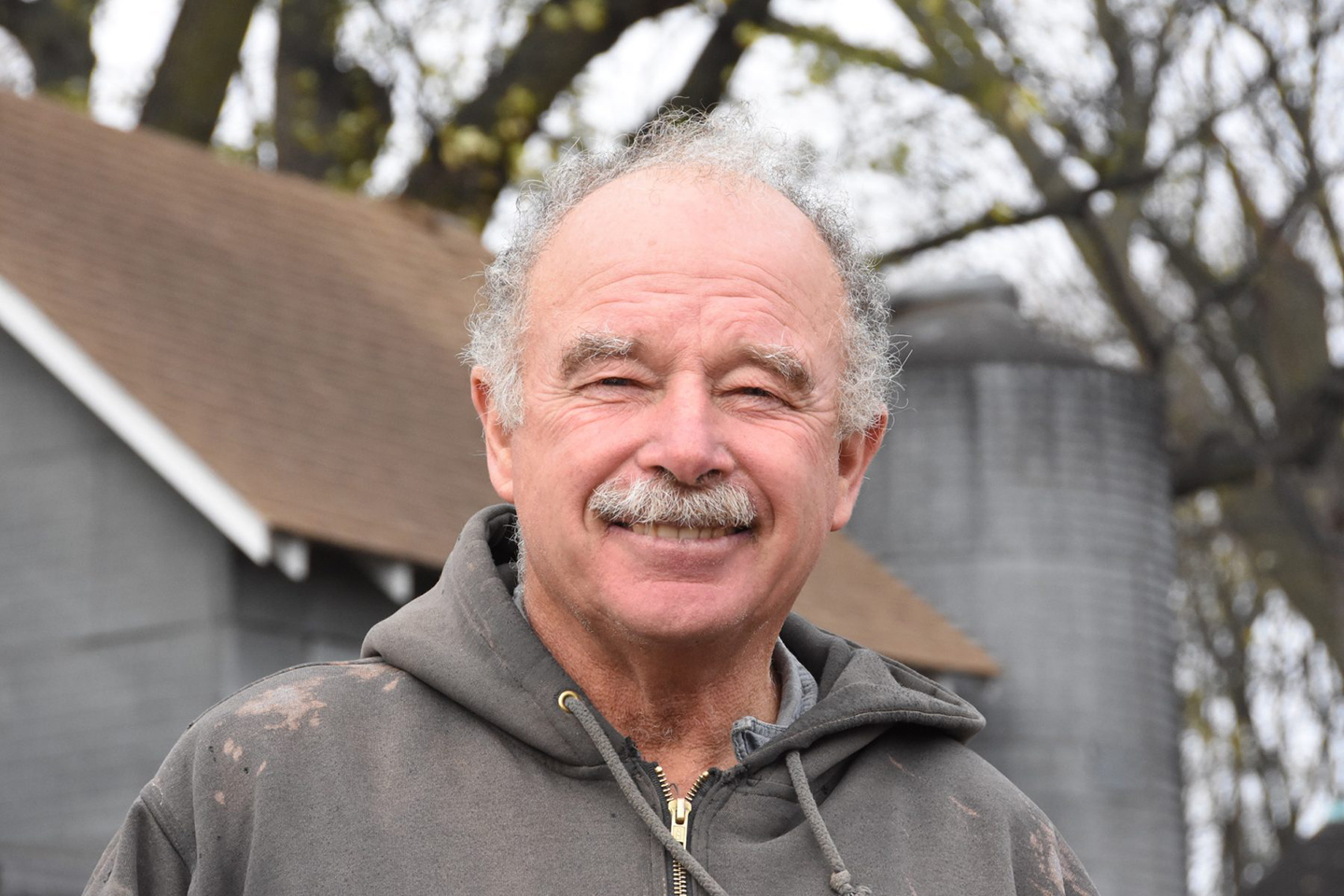
the environmental impacts of agriculture. Photo by Martin Kunz
Perforated pipes were placed into ditches, dug by hand, three to four feet deep and 10 to 20 yards apart. Water drains into the pipes and from there into creeks, then rivers and finally the Mississippi, the Missouri and the Gulf of Mexico. Today, there are about 120 miles of drainage lines for every square mile of land in Iowa.
“From the time I was born until now, the land was altered as dramatically as you can possibly imagine,” said Frantzen. “You cannot get more than 10 yards away from a drainage line anywhere here.”
Today, 85 percent of all land in Iowa is used for agriculture, with 13.5 million acres of corn and 9.45 million of soy. Iowa has a population of about 3 million people — plus 21 million hogs and 60 million chickens. But this triumph of industrial agriculture, feted by farm lobbies, comes with a hefty price.
Environmental problems downstream
Nitrates, a compound of nitrogen and oxygen, come from many sources: chemical fertilizer; soybeans leaching nitrates; the manure of the millions of hogs, cattle and chickens. Most of these animals are kept in confinement, with the manure stored in “lagoons” until it can be sprayed onto fields or directly injected into the soil.
Nitrates are water-soluble. What can’t be absorbed by soil microorganisms and plants will enter the water cycle — either through direct runoff or through the tiles. Eventually, all of the surplus nutrients, from Iowa and other Midwestern states, make their way down the Mississippi, feeding algae and other microorganisms and causing the oxygen level in the water to drop. The result is a huge hypoxic or “dead zone” in the Gulf of Mexico, which last summer was about the size of Connecticut.
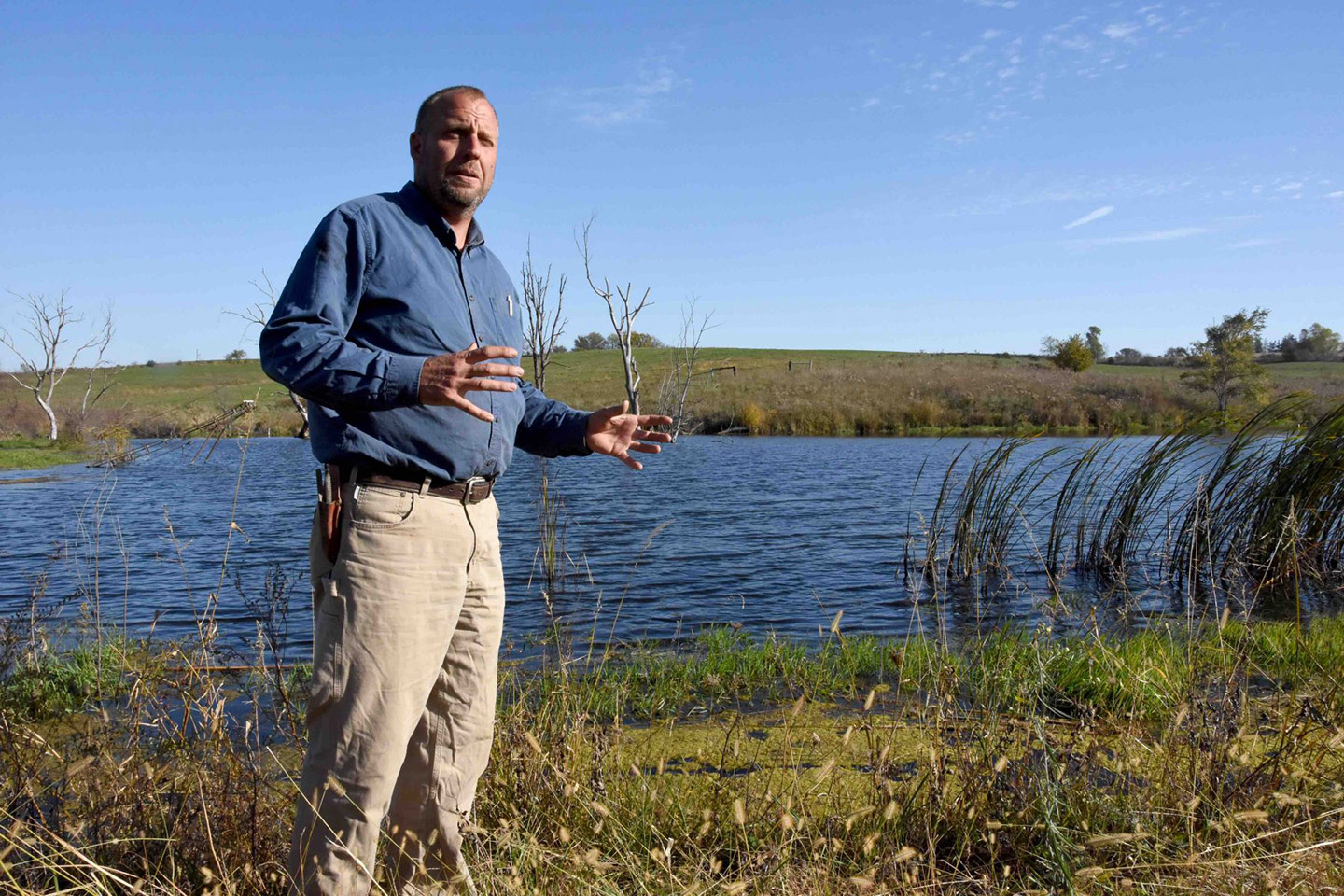
A thicket of reed helps to clean the water, which slowly makes its way to troughs for the cattle. Photo by Martin Kunz
It may be difficult to put a concrete number on the cost of that dead zone, but in Iowa the Des Moines Water Works (DMWW) knows precisely what nitrate pollution costs because it has to filter it out. In 1962, the Environmental Protection Agency (EPA) set the standard for drinking water at 10 milligrams per liter (mg/l).
Studies have shown that nitrogen and nitrates can cause a number of health problems, including blue baby syndrome, a potentially life-threatening condition in infants. Other studies suggest a link between the nitrate level in drinking water and birth defects, some cancers and thyroid problems. A number of scientists assume that the current standard for nitrate in drinking water is not safe and should be lowered.
In Iowa, keeping to the existing standard is hard enough. “In 2015, we had to run our de-nitrification unit for 177 days at a cost of $1.5 million,” said Bill Stowe, the DMWW’s CEO and general manager, when I met him in the fall of 2016. “That’s the operating cost and does not include capital costs. Ten years ago, we needed it on 20 days per year.” Tall and with a mane of white hair, Stowe cuts an imposing figure. And he has the guts to go with it. In 2015, the DMWW sued three drainage districts for the discharge of nitrate pollutants into the Raccoon River, the main water source for the city of Des Moines.
“We are a surface water provider, providing water for 500,000 people in this area,” he said. “The water does not come from an aquifer, and the quality of the water is driven by land use. The Racoon River is an open sewer for industrial agriculture. Producers have no responsibility for what they do. Any other industry has this responsibility.”
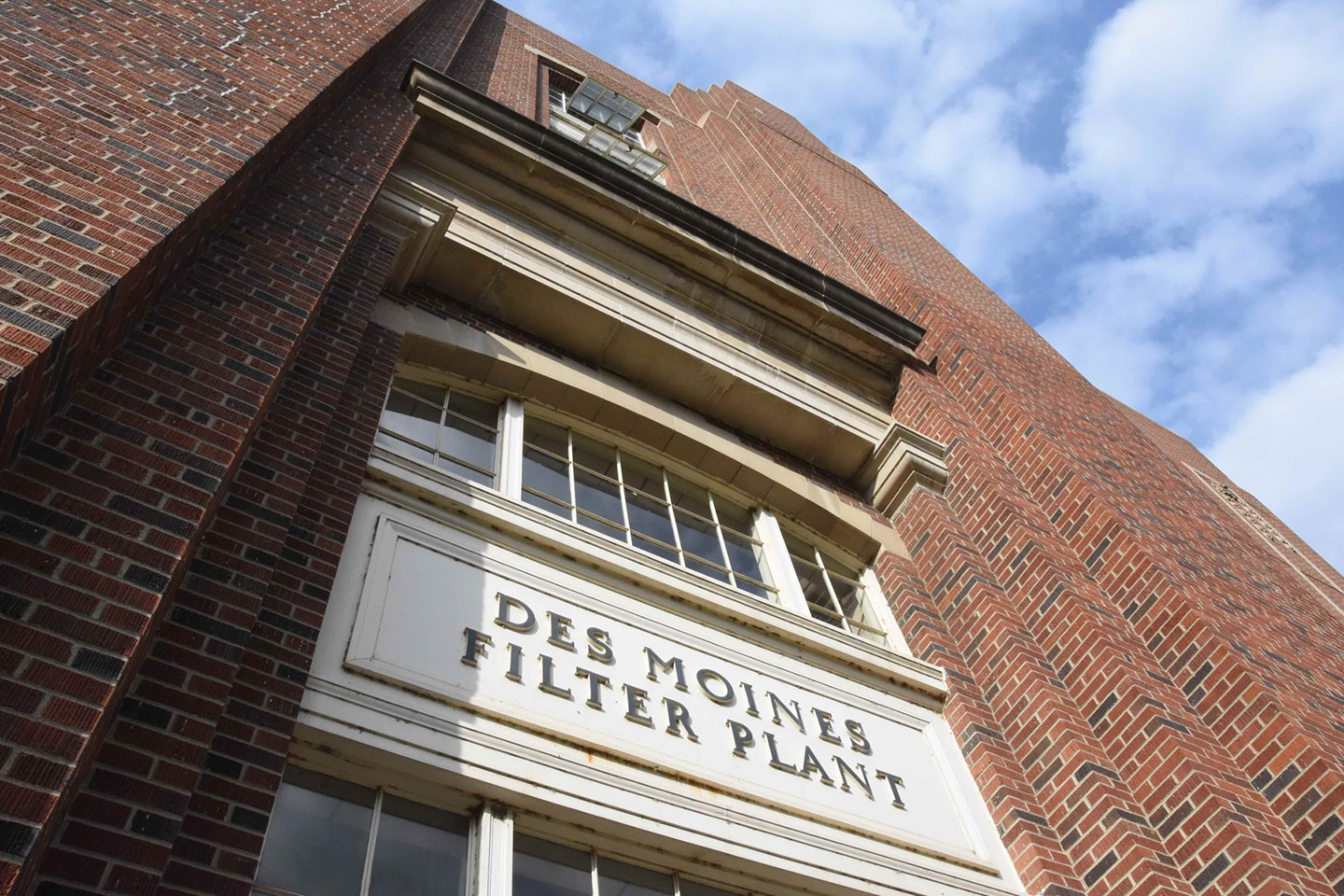
Raccoon River — a job that because of industrial agricultural pollution is becoming increasingly difficult.Photo by Martin Kunz
Who is responsible for making it right?
Here’s his argument: Anyone discharging water into public waterways from a point source, like a culvert, drain or sewer, has to be licensed. And with the right to discharge come obligations like silt fencing or controlling the amount of phosphorus, nitrate and other pollutants. Agriculture has an exemption for water runoff from fields, but the drainage tiles, argues Stowe, who has law and engineering degrees, is point source pollution. And that’s why, in his opinion, the drainage districts should be regulating the system.
“I did not come into the job to litigate the most powerful bodies in the state,” he said, making an economic argument for taking the fight to the courts. “But the alternative is so bad we have to fight this through.”

The DMWW has the world’s largest de-nitrification unit, but it’s no longer big enough. A new one would cost about $100 million, which is why Stowe suggested that the DMWW board invest $2 million in a lawsuit in an attempt to avoid building a new facility. For Stowe, it’s a socioeconomic issue, too: because of the additional costs for de-nitrification, water rates in Des Moines had to be increased at the end of 2016. A lot of people can ill afford the rate rise: three quarters of all students in the inner city are eligible for subsidized meals — which means they are poor.
Stowe was quiet when I asked about the emotional toll the lawsuit has taken. He could only say that it is having an effect on him and his family. Which is not surprising — according to Terry Branstad, the state’s governor at the time, the DMWW declared war on Iowa before the suit was even filed. In his opinion, Iowa’s voluntary nutrient reduction strategy is all that it takes to deal with the water issues.
“It’s just not working,” said Stowe. “For us to pretend that voluntary measures will give to us what we are owed is ridiculous. Encouraging and educating farmers is like encouraging me to voluntarily pay taxes. We have been working for a decade with the industry, and the situation has become worse. It is in the best interest of our customers to hold industrial agriculture accountable.”
The battle lines have been drawn, and the fight is getting ugly. In February 2017, the Iowa Legislature introduced a bill to dismantle the DMWW. At present, it’s stuck in the state senate and unlikely to pass this year. And a federal court recently dismissed the lawsuit without considering the arguments. The industry reacted with delight, but its representatives also know that the issue won’t go away. In an interview, Iowa Agriculture Secretary Bill Northey said how pleased he was with the outcome but acknowledged that an appeal or future lawsuits couldn’t be ruled out.
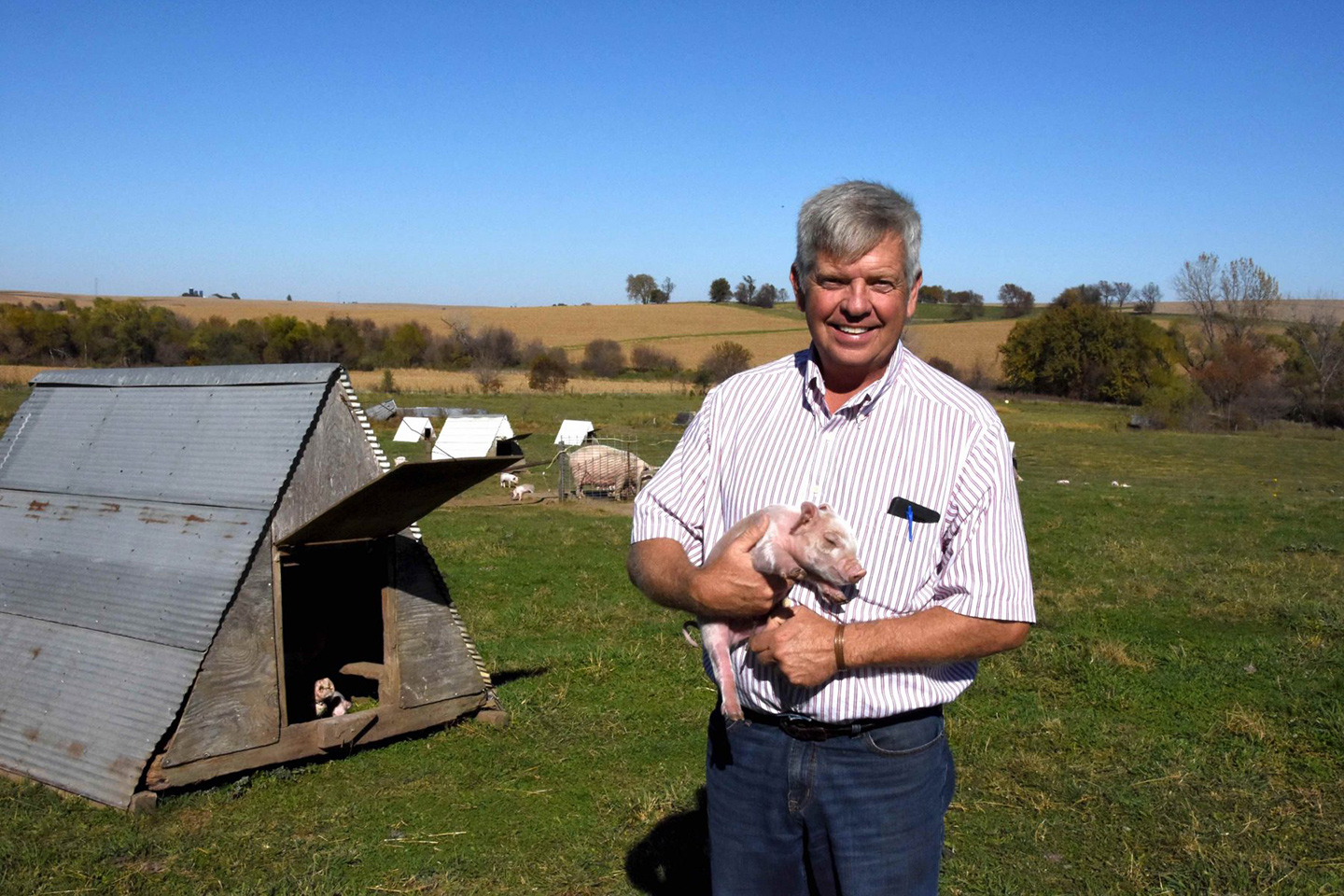
Farmers show a different way
Meanwhile, some Iowa farmers are proving that a different, sustainable and restorative form of agriculture is not just possible but also financially viable — a form of agriculture that, if widely embraced, would reduce the need for Stowe’s de-nitrification unit.
Tom Frantzen and Ron Rosmann have been running diverse, organically certified farm operations for decades. They work with wide buffer strips, have planted trees and are thinking about integrating more permanent crops like fruit and nut trees. Jon Bakehouse works on maximizing the benefits of cover crops on his farm and takes care of the soil. Ron Mardsden raises hogs on pasture and in hoop houses with deep straw beds that keep the pigs clean, warm and dry and make perfect compost.
And there is Seth Watkins, who has a 600 cow-calf herd on pasture. He has created almost 60 ponds on his land to catch runoff from neighboring farms. A thicket of reed helps to clean the water, which slowly makes its way to water troughs for the cattle and into the nearby river. Watkins regularly measures the nitrogen content of the water that leaves the ponds — on average, it’s 2 milligrams per liter (mg/l). The EPA standard for drinking water is less than 10 mg/l. Some of the ponds easily accessed from the road are fenced off so cattle can’t get to them, but locals can go there for birdwatching, fishing or a picnic.
Watkins’ farm is in a hilly part of southwestern Iowa. To hold back the water, he’s introduced 30- to 40-foot-wide prairie strips to the arable land. Below the ground, long-rooted, perennial grasses restore the soil. Above, they are a habitat for wildlife.
“We have to decide if we want to be part of the planet or not,” said Watkins. The path he’s chosen has made the farm one of the most serenely beautiful (and economically viable) places imaginable. It’s the dream to Bill Stowe’s nightmare.
“We are at a crossroad,” said the DMWW’s CEO. “What is the vision for this state? Is Iowa no more than a big feedlot fed by corn and hogs between the two greatest rivers in the U.S., the Missouri and the Mississippi?”
The farmers I met are proving that Iowa can be a lot more than that.


